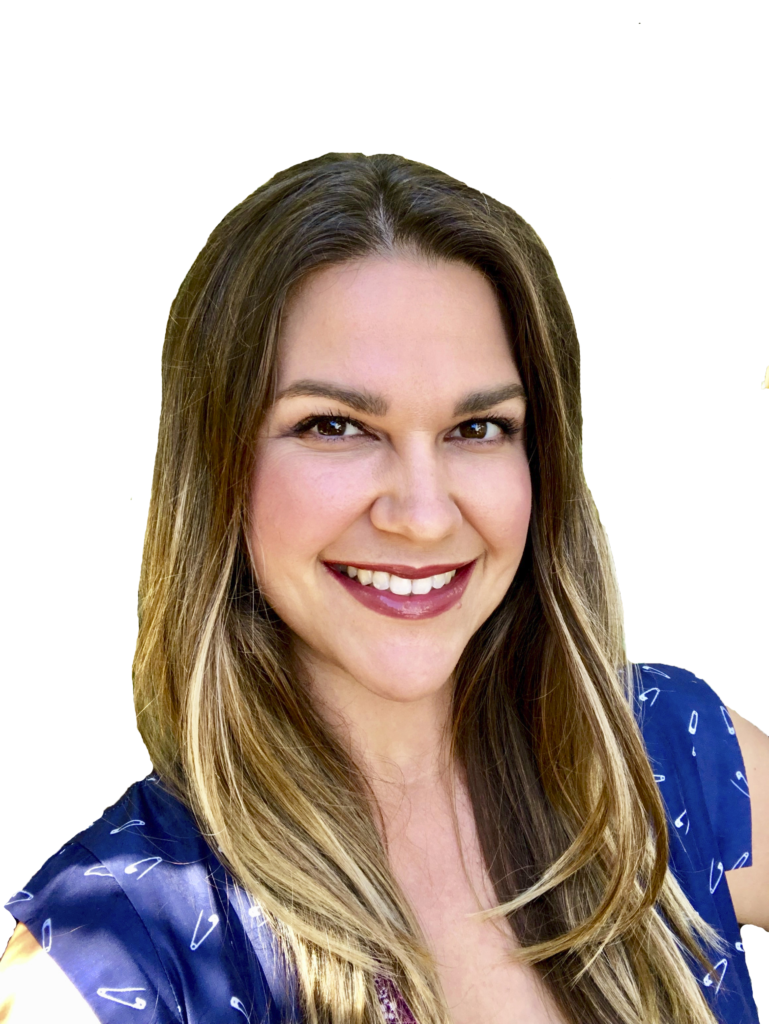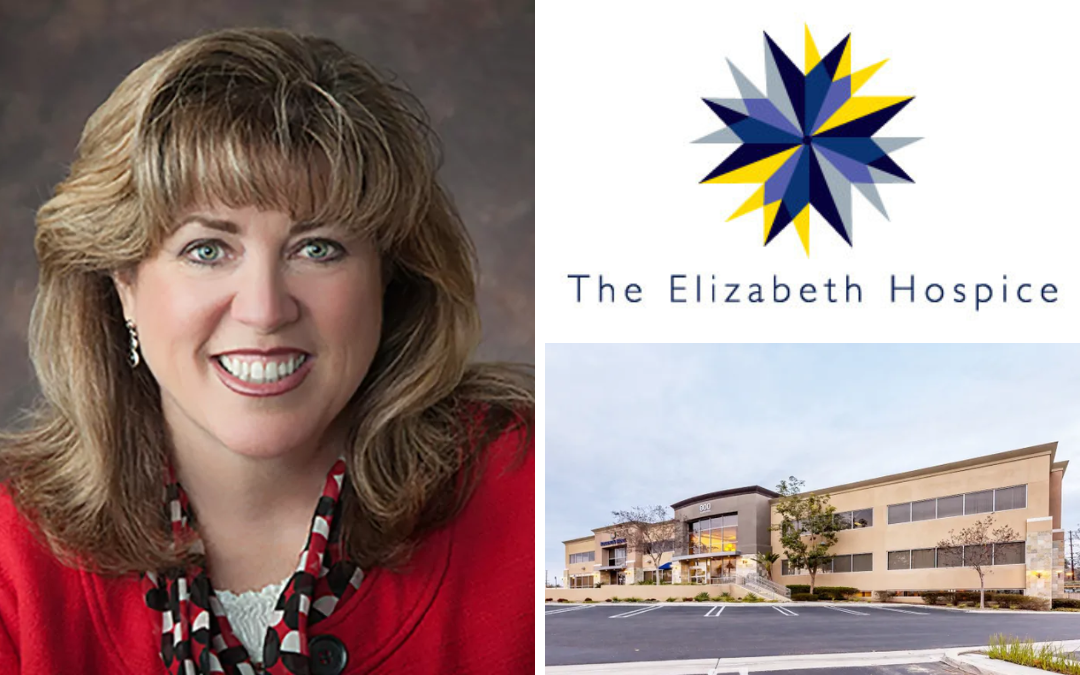Ever played Go Fish? Well, Sarah McSpadden has a different kind of card game in mind for San Diego County residents – “Go Wish.” As the CEO of The Elizabeth Hospice in Escondido, McSpadden recommends using this game to make those tough end-of-life care conversations a bit easier. This game recommendation is just one way she encourages folks to understand available healthcare and what really matters to their loved ones as life approaches its final chapters. It’s not your typical game night; it’s a practical and compassionate approach to discussing what can be a challenging topic.
“When a loved one needs hospice, it’s always going to be an emergency. There’s not a lot of time to make sure you really investigate the hospice that you’re choosing and try to make an informed decision,” McSpadden said. “Given what’s going on in hospice in the state of California, being an informed consumer is extremely important.”
California’s Hospice Care Reform
In the last few years, a report by the U.S. Department of Health and Human Services found that the number of licensed hospices in California made up half of the hospices in the entire nation. This greatly affected the quality of hospice and palliative care one could expect to receive in California.
“The government began to realize that the licensing and certification of hospices in California wasn’t being done as carefully and effectively as it should have been, and families and patients are being affected,” McSpadden said.
Some hospice providers were obtaining licenses to sell for a profit, and others were sought a license to gain access to the daily hospice rate paid by the government. It was an easy business to start, because the owner didn’t need to be a clinician or show qualifications up front to get the license. As a result, out of 723 California hospices surveyed between 2012 and 2016, 94% reported at least one deficiency.
In response to this staggering statistic, California passed two new bills to reform California hospice care: one placed a moratorium on new hospice licenses in 2022, and the other requires only licensed medical professionals or counselors to assist a patient with the selection of and registration in hospice care. McSpadden hopes these changes will help hospice and palliative care patients access reputable hospices equipped to meet their end-of-life needs.
How The Elizabeth Hospice Provides Care
The Elizabeth Hospice was created by three friends all named Elizabeth. Elizabeth Betty Buellen founded The Elizabeth Hospice in 1978 a little house on Kalmia Street in Escondido. It was run by volunteers, besides the Medical Director, who was paid $1 per year. All of the medical equipment and supplies were donated by Buellen, until hospice became a Medicare covered benefit in 1982. Today, The Elizabeth Hospice provides care from San Diego County to Southwest Riverside County, and it’s the only program in the area that provides pediatric hospice and palliative care.
“There’s not a lot of hospice programs across the country that have been around for this long,” McSpadden said. “Betty wanted to start a new kind of healthcare around dying with dignity, and the idea swept across the county in the non-profit world.”
“Our mission is to take care of people who have been diagnosed with a terminal illness,” McSpadden said. That doesn’t always mean the patients will pass while on hospice, because they also provide palliative care and service prior to patients qualifying for hospice, anywhere that the patient calls home.
“We’ve actually placed patients in hotels to care for them, cared for them under bridges, in homeless shelters,” McSpadden said. “One of our patients was in an RV, and he kept moving from parking lot to parking lot. Even though he was all over the county in his RV, the staff just followed him around and cared for him until he passed. The goal is to try to bring the care to the area of community that best supports the patients’ families being near them.”
Support for Families and Community
For patients’ families, The Elizabeth Hospice provides grief services at their Center for Compassionate Care during patients’ care and for at least 13 months after patients’ passing. They also open grief services to the entire community, including counseling on school campuses and grief camps for kids who have lost someone.
“We’re definitely mission driven about trying to make sure that patients not only get through what is inevitable for all of us and hard to talk and think about, but then also help those who are left behind to be able to manage their lives afterward,” McSpadden said.
“If you put someone out in the community with unresolved grief, their engagement with life is not the same, and their impact on others is not the same, which is why we extend our grief services to everybody in the community. It makes the community better, makes it safer, makes people care more about each other.”
From Registered Nurse to Hospice Care
McSpadden comes from a long line of registered nurses, born and raised in Escondido. She began her nursing career on the neurotrauma floor at Sisters of Mercy Hospital in San Diego. In 2000, her father went through hospice, and it wasn’t a great experience for her family.
“I had been doing home health for about 10 years or so at that point, and I remember thinking, ‘This could and should be done better than this,’” McSpadden said.
What began as a negative experience changed the trajectory of her career as she began researching best practices for hospice care. She was intrigued by the delivery of care and the emotional side of taking care of families as they lose a loved one. In 2003, she made the switch to hospice care, traveling as a home health nurse.
“Traveling all over the county doing patient care and education gave me a pretty good perspective of what goes on out there in the world. I was in houses with no flooring, to wealthy houses in La Jolla, and then back with somebody who had no food in their refrigerator.”
“I’ve been held at gunpoint. I’ve been chased by someone with a knife. I’ve climbed out windows because the house was unsafe. I’ve had a lot of those experiences, and a lot of wonderful experiences too,” McSpadden said. She is thankful for all these experiences because she believes they brought her crucial knowledge for her current role as CEO.
Her Role as CEO
“I don’t know that you can sit in a role like this, trying to change the outcome in people’s healthcare, if you don’t have that wide perspective,” McSpadden said. “You have to actually see everything for what it is – not just from your own perspective – from everybody else’s perspective. How else do you adapt your practice to meet the needs of a community?”
Supporting the community is one of McSpadden’s favorite parts about her job. At The Elizabeth Hospice, the staff shares “Mission Moments,” telling stories about what has happened to patients and families and how hospice staff impacted them in positive ways. Though the subject matter of her job is often difficult, she finds purpose and fulfillment in the role.
“The job can be tough unless you recognize you’re helping somebody else. Then that kind of fills you back up again,” McSpadden said. “That’s why I took this role, because now I can impact more people in a bigger way across this county, the next county, and even nationally working on the regulations and the changes in hospice.”
Choosing Elizabeth Hospice and North County
When it was time for McSpadden to return to San Diego County to be around her mother as she aged, she zoned in on The Elizabeth Hospice for her landing place.
“I came to Elizabeth specifically, even though there wasn’t a job available at the time. I thought, ‘As soon as there is one, I’m going to apply.’ I just wanted to be here, because this is the organization that helps change a community,” McSpadden said.
Another thing that drew McSpadden back to the area is the natural beauty and access to nature. She and her husband often paddleboard in the lagoons, backpack in the mountains, and camp locally in their RV.
“Living here in North County, you get a rural city feel. Nature is easily accessible in almost any direction, which I just love,” McSpadden said. The only thing she really wishes she had more of is water, because she is also an avid gardener. With two acres, about one hundred fruit trees of different types, and 120 rose bushes, McSpadden finds great joy taking in the North County weather right in her own backyard.
Perhaps it is her penchant for nurturing that has made her so successful in both her career and in her garden. Whether it is caring for patients or the nature she loves, her dedication and care is evident.
Read the story covering Steve Vaus, Mayor of Poway here for more content.
Get to know some of North County’s entrepreneurs, innovators, and leaders, and learn why they believe this region is a world-class place to do business. If you would like your company featured in “Meet North County Stewards,” or if you’d like to nominate someone for an interview, click this link to submit your nomination!
About the Author

Caitlyn Canby loves to discover and share people’s stories. She has her bachelor’s degree in Communications, Print Journalism with over 8 years of journalism experience. An Escondido native, she just moved back from Catalina Island to North County with her husband and two children to the town of Fallbrook. Caitlyn enjoys collaborating on projects as Marketing and Events Coordinator at SDNEDC, traveling, and exploring new restaurants, venues, experiences, and cultures.

